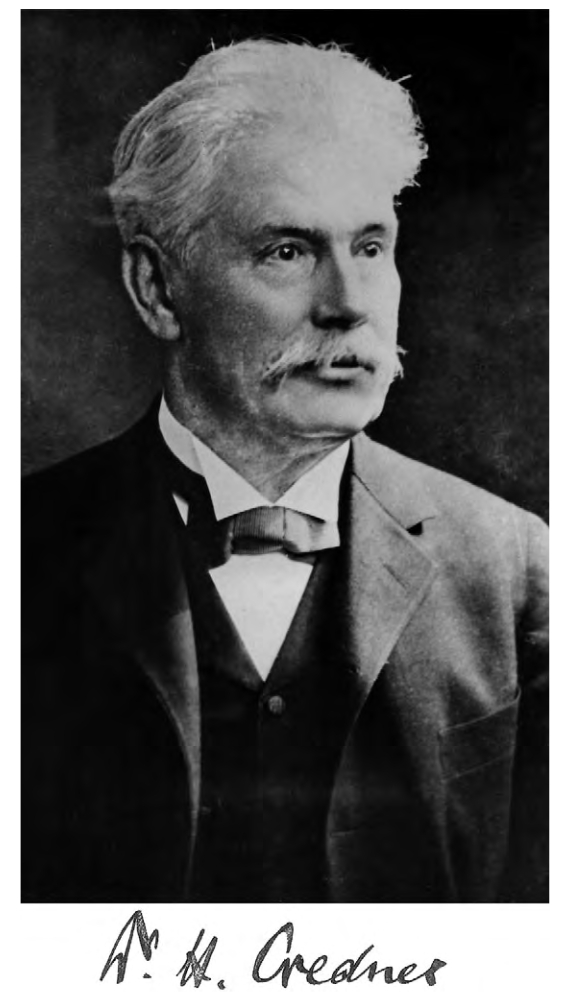Carl Hermann Credner on:
[Wikipedia]
[Google]
[Amazon]
 Carl Hermann Georg Credner (1 October 1841 – 21 July 1913) was a German
Carl Hermann Georg Credner (1 October 1841 – 21 July 1913) was a German
''Die Urvierfüssler (Eotetrapoda) des sächsischen Rothliegenden''
(1891).
Elemente der geologie
(1897)
(in German) * {{DEFAULTSORT:Credner, Hermann 1841 births 1913 deaths People from Gotha (town) People from Saxe-Coburg and Gotha German paleontologists University of Breslau alumni University of Göttingen alumni Academic staff of Leipzig University
 Carl Hermann Georg Credner (1 October 1841 – 21 July 1913) was a German
Carl Hermann Georg Credner (1 October 1841 – 21 July 1913) was a German earth scientist
Earth science or geoscience includes all fields of natural science related to the planet Earth. This is a branch of science dealing with the physical, chemical, and biological complex constitutions and synergistic linkages of Earth's four spheres ...
and the son of Carl Friedrich Heinrich Credner (usually given as Heinrich Credner). He examined the geology of Saxony and was influential in establishing Saxon geology through pioneering maps and a textbook. Credner Glacier on Mount Kilimanjaro
Mount Kilimanjaro () is a dormant volcano in Tanzania. It is the highest mountain in Africa and the highest free-standing mountain above sea level in the world, at above sea level and above its plateau base. It is also the highest volcano i ...
is named after him. Geographers named Credner moraine on Spitsbergen, Credner moraine Mountains in Papua New Guinea, and Credner Waterfall in Togo after him. A manganese copper ore was, however, named after his father as crednerite while a fossil genus '' Credneria'' is named after his uncle Carl August Credner.
Biography
Credner was born atGotha
Gotha () is the fifth-largest city in Thuringia, Germany, west of Erfurt and east of Eisenach with a population of 44,000. The city is the capital of the district of Gotha and was also a residence of the Ernestine Wettins from 1640 until the ...
, the son of Privy Council Member Heinrich and Annanée Vey. He studied at Clausthal where his father had also studied followed by Breslau and Göttingen
Göttingen (, ; ; ) is a college town, university city in Lower Saxony, central Germany, the Capital (political), capital of Göttingen (district), the eponymous district. The River Leine runs through it. According to the 2022 German census, t ...
, and took the degree of Ph.D. at Göttingen in 1864. From 1864 to 1868, he made extensive geological investigations in North and Central America, the results of which were published in the ''Zeitschrift der Deutschen Geologischen Gesellschaft'', and the ''Neues Jahrhuch für Mineralogie''. He completed his habilitation in 1869 at Leipzig under C. F. Naumann. In 1870, he was appointed professor of geology in the University of Leipzig
Leipzig University (), in Leipzig in Saxony, Germany, is one of the world's oldest universities and the second-oldest university (by consecutive years of existence) in Germany. The university was founded on 2 December 1409 by Frederick I, Electo ...
, and, in 1872, became director of the Geological Survey of Saxony
Saxony, officially the Free State of Saxony, is a landlocked state of Germany, bordering the states of Brandenburg, Saxony-Anhalt, Thuringia, and Bavaria, as well as the countries of Poland and the Czech Republic. Its capital is Dresden, and ...
. He became a full professor in 1895.
During the Franco-German War of 1870 he served with the volunteer medical corps. In 1872 he married Marie Riebeck, daughter of Adolph Carl Riebeck (1821–1883). They had six daughters.
Credner took an interest in the stegocephala and dinosauria of Rotlegen near Dresden. He examined glaciation, and the formation of loess. He developed geological maps of Saxony, producing overviews at a scale of 1:250,000 and one on a scale of 1:500,000. His students included Felix Wahnschaffe (1851–1914) and he collaborated with many geologists of the period including Richard Beck (1858–1919), Karl Dalmer (1855–1908), Ernst Dathe (1845–1917), Joseph Hazard (1851–1908), Otto Hermann (1859–1945), Gustav Klemm (1858–1938), Johannes Lehmann (1851–1925), Albrecht Penck (1858–1945), August Rothpletz (1853–1918), Adolf Sauer (1852–1932), Ferdinand Schalch (1848–1918), Theodor Siegert (1835–1913), Heinrich August Vater (1859–1930) and Emil Weber (1859–1928). He was also involved in establishing seismological observatories from 1902.
Works
Credner wrote numerous publications on the geological formations of Saxony, and published a geological chart of the Kingdom of Saxony (1877 et seq.). He wrote ''Elemente der Geologie'' (2 vols., 1872; 7th ed., 1891), regarded as the standard manual in Germany. He also wrote memoirs on Saurians andLabyrinthodont
"Labyrinthodontia" (Greek, 'maze-toothed') is an informal grouping of extinct predatory amphibians which were major components of ecosystems in the late Paleozoic and early Mesozoic eras (about 390 to 150 million years ago). Traditionally conside ...
s, for example ''Die Stegocephalen und Saurier'' (1881–93). He also wrot''Die Urvierfüssler (Eotetrapoda) des sächsischen Rothliegenden''
(1891).
References
Other sources
* * *External links
Elemente der geologie
(1897)
(in German) * {{DEFAULTSORT:Credner, Hermann 1841 births 1913 deaths People from Gotha (town) People from Saxe-Coburg and Gotha German paleontologists University of Breslau alumni University of Göttingen alumni Academic staff of Leipzig University